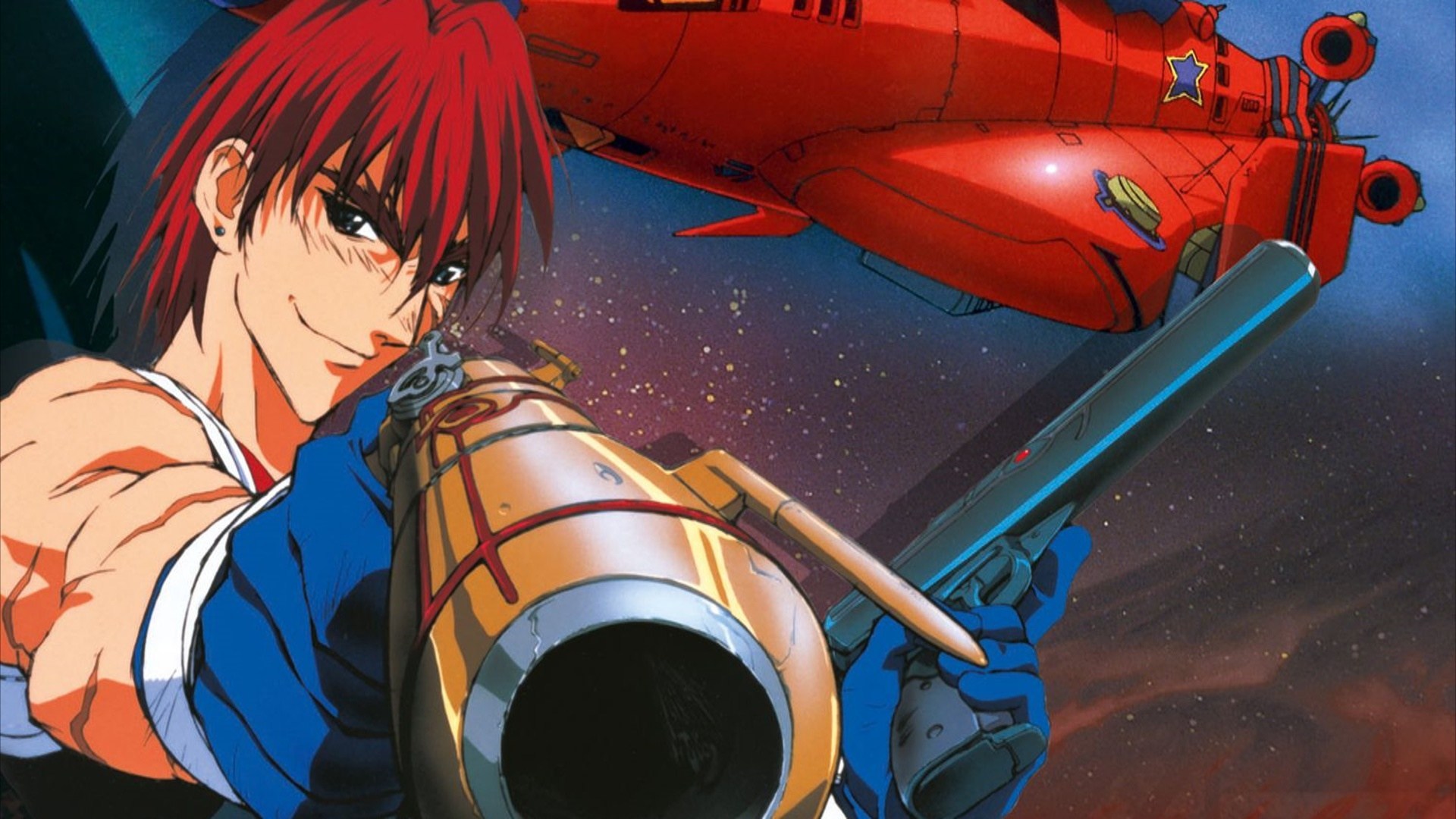
Outlaw Star is an anime that aired in Japan from January 1998 – June 1998. The show was licensed by Bandai entertainment and became a staple of Cartoon Network’s Toonami block in 2001. The main character is Gene Starwind, a womanizing mercenary for hire with dreams of becoming a spacefaring Outlaw. With the help of his right-hand man (or should I say, right-hand boy), Jim Hawking, and a host of colorful characters they meet along the way, Gene is finally able to achieve his dreams, solve the mystery of his tragic past, and save the universe from ruin.
As I re-watched Outlaw Star for the first time since my impressionable teenage years, I kept thinking of this popular phrase: “A camel is a horse designed by committee.” Outlaw Star feels like it was designed by a committee. Watching it is like watching an argument.
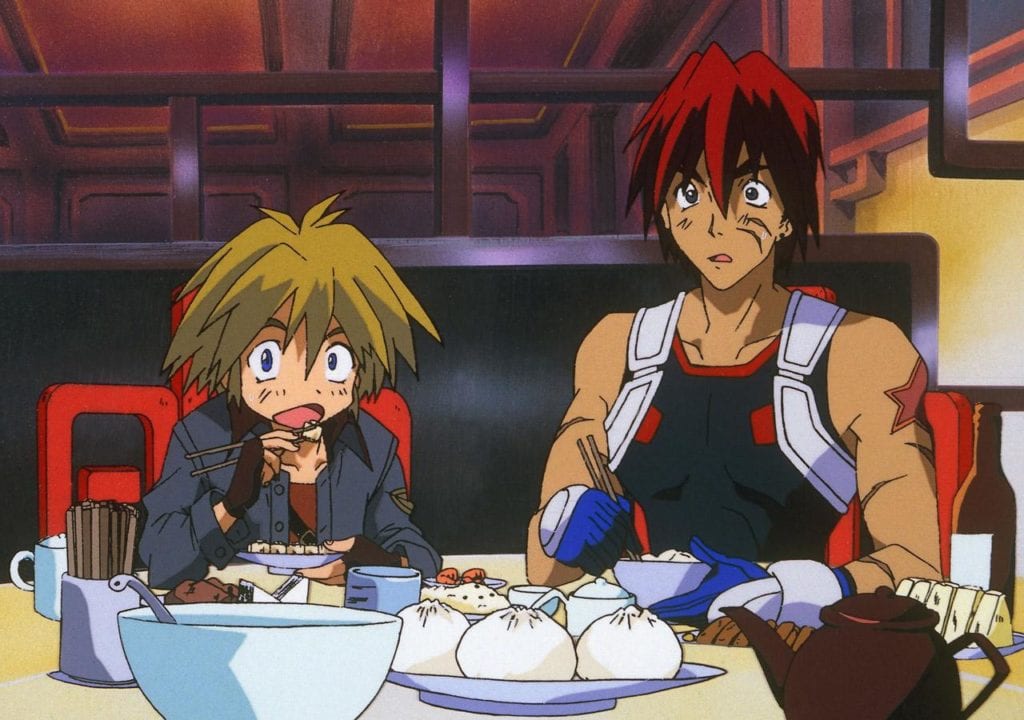
Is the show a dark character study, or a goofy space romp? Is it about true love, or is it an excuse to feature naked women with gravity-defying breasts? Is it a complicated mystery about the nature of power, or is it a series of episodic adventures with little to no plot? The answer is yes.
Every review of Outlaw Star that I have seen spends the entire length comparing it to other shows. Therefore, I solemnly swear that I will not fall into that trap. For instance, in this review, I won’t be comparing Outlaw Star to…
Tenchi Muyo/ Tenchi Universe
The original Harem show. Tenchi Muyo (and its subsequent expansion Tenchi Universe) is about a hapless schmuck named Tenchi and the many women who inexplicably become obsessed with him. These women include a space pirate, a police officer, a princess, and a mad scientist. Together, these characters must face overwhelming odds to restore peace to the galaxy, and they may even find love along the way.
Outlaw Star is about a hapless schmuck named Gene Starwind and the many women who inexplicably become obsessed with him. These women include a space pirate, an assassin, an alien princess, and an android. Together, these characters must face overwhelming odds to restore peace to the galaxy, and they may even find love along the way.
On the surface, Outlaw Star looks a lot like a Harem show. The most cringe-worthy episode, Hot Springs Planet Tenrei (which did not air on Toonami due to the excessive nudity and adult themes), definitely leans into that impression. Although a lot of Outlaw Star’s humor is derived from battle-of-the-sexes mishaps and misunderstandings, the romantic aspect of the show is relegated to subplot status. The women, with a few notable exceptions, are treated with dignity and respect.
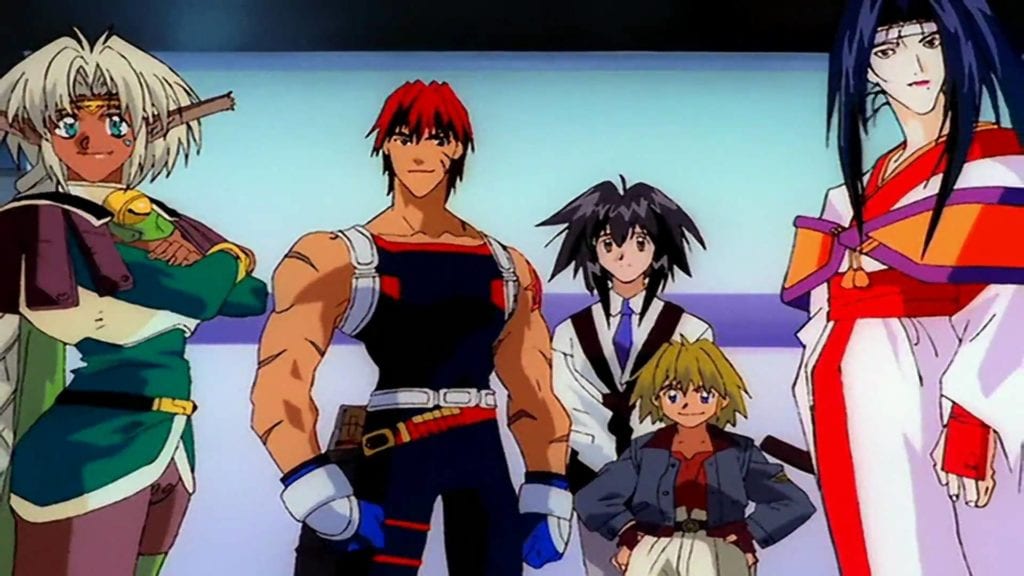
The character design of Aisha may be problematic, but her personality is anything but. She is fierce, strong, and stubborn, and forms a much closer bond with 11-year-old Jim than she does with Gene. Meanwhile, Twilight Suzuka (voiced by the incomparable Wendee Lee), is treated with nothing short of reverence. She is completely autonomous, often abandoning the crew to pursue her own goals. The idea of romantic involvement with Gene is brought up once or twice, but each time, she brushes the thought aside. Twilight Suzuka has more important things to do than moon over an immature man-child. Melfina, the true love interest of the show, spends the majority of her screen time naked, but this is never treated as something sexual. In fact, she is a maternal figure, offering comfort to both Jim and Gene throughout the series. She is the glue that holds the crew together.
So Outlaw Star has all of the trappings of a Harem show, but this seems to be more of an aesthetic choice than a thematic one. It looks like Tenchi Muyo, but it doesn’t feel like it. So, if Outlaw Star isn’t Tenchi Muyo, then what is it? Well, I can promise that I definitely won’t be comparing Outlaw Star to…
Firefly/ Serenity
The cult classic sci-fi western from the mind of Joss Whedon. Firefly follows a crew of outlaws led by charismatic captain Mal Reynolds as they unravel the mystery of River Tam, a strange young woman with supernatural abilities. With the Alliance hot on their trail, the crew of the Serenity must travel into the darkest depths of space and uncover the truth hidden away on the planet Miranda. However, the truth may very well cost them their lives.
Outlaw Star follows a crew of outlaws led by charismatic captain Gene Starwind as they unravel the mystery of Melfina, a strange young woman with supernatural abilities. With the Kei pirates hot on their trail, the crew of the Outlaw Star must travel into the darkest depths of space and uncover the truth hidden away at the Galactic Leyline. However, the truth may very well cost them their lives.
Some reviewers have posited that Firefly would not exist without Outlaw Star, citing the overall tone and the character of Melfina as clear evidence that Whedon was inspired by the anime cult classic. Unfortunately, I couldn’t find any claims from Whedon to support this theory. It is undeniable that the two shows are eerily similar at times though.
Firefly fans are certain to remember the jaw-dropping reveal of River Tam in the series premiere, and anime fans are just as likely to draw an instant parallel to the reveal of Melfina in the series premiere of Outlaw Star. The resemblance is uncanny. Even if Firefly isn’t an American adaptation of Outlaw Star, Whedon clearly drew inspiration from its imagery.
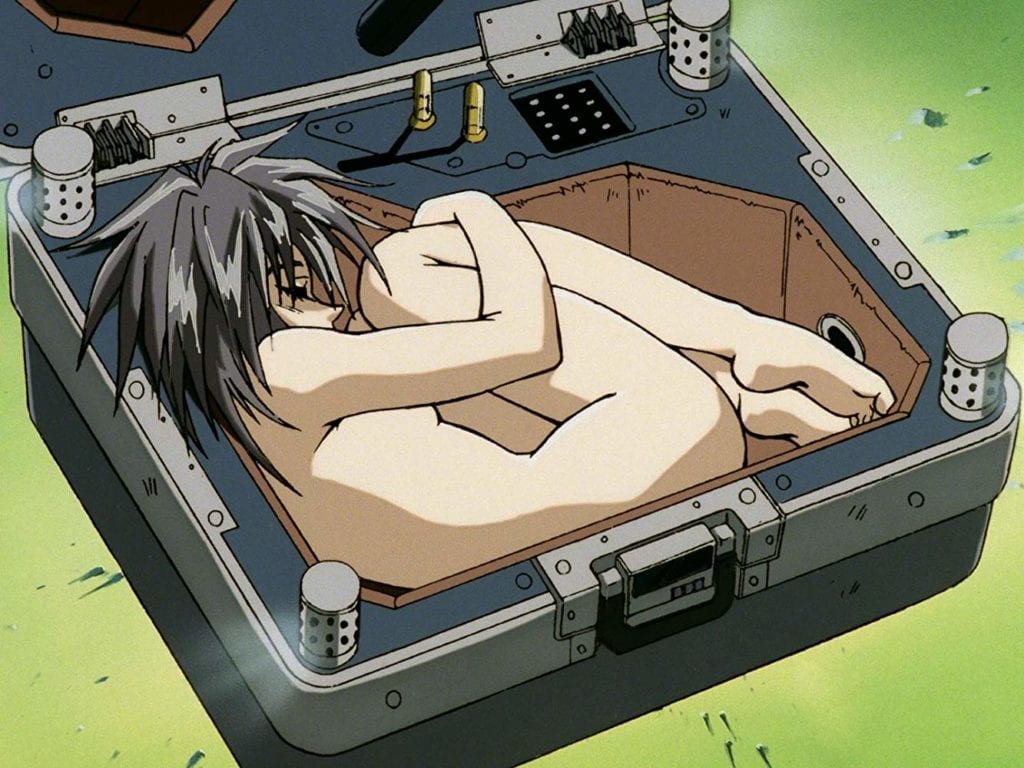
Nonetheless, Firefly is an American show. For all of its anime-inspired space western roots, Firefly has very little in common with Outlaw Star after the first few episodes. While Mal and his crew are focused on cutting deals with cowboys on sparsely populated desert moons, Starwind and Hawking enterprises are far more interested in space races and grappler ship battles. Outlaw Star may have a cowboy vibe, but it’s sci-fi, through and through. Firefly may take place in space and may have east Asian influences, but it’s a western at heart; an American product for American audiences.
That being said, what if there was another show, a show that epitomized the Japanese space western? What if there was a show that’s so synonymous with anime sci-fi that comparisons between the two properties would be inevitable? What if Outlaw Star spent its entire life in the shadow of a masterpiece? No matter what, I absolutely will not, under any circumstances, be comparing Outlaw Star to…
Cowboy Bebop
The treasured anime classic found in every Space Cowboy’s collection. Cowboy Bebop is a jazzy noir space opera. It follows a ragtag band of misfits as they try to scrape by in the dog-eat-dog world of bounty hunters. The ship is always in disrepair, and the crew always seems to be just one more job away from making it big. It stars Spike Spiegel and his backup, Jett, as they eke out a meager and unpredictable pittance as bounty hunters. Along the way they pick up a few more misfits, including a femme fatale, a computer genius, and a cybernetically enhanced dog.
Outlaw Star is a space opera that follows a ragtag band of misfits as they try to scrape by in the-dog eat-dog world of outlaws. The ship is always in disrepair, and the crew always seems to be just one more job away from making it big. The series stars Gene Starwind and his backup, Jim, as they eke out a meager and unpredictable pittance as outlaws, picking up a few more misfits along the way, including a femme fatale, a computer genius, and a shapeshifting tiger-woman.
It makes sense that Cowboy Bebop and Outlaw Star are so similar. Both released in the same year by the same production company, Sunrise, these two titles were likely influenced by each other throughout the development process. Outlaw Star, which began its run in January 1998, might have even been used as a testing ground for Cowboy Bebop, which was released four months later. Stylistic choices, like Outlaw Star’s bold use of color in space or Cowboy Bebop’s surprising love affair with the harmonica, may have even bled over from one project to another. Despite all of their outward similarities, these two shows are miles apart tonally.
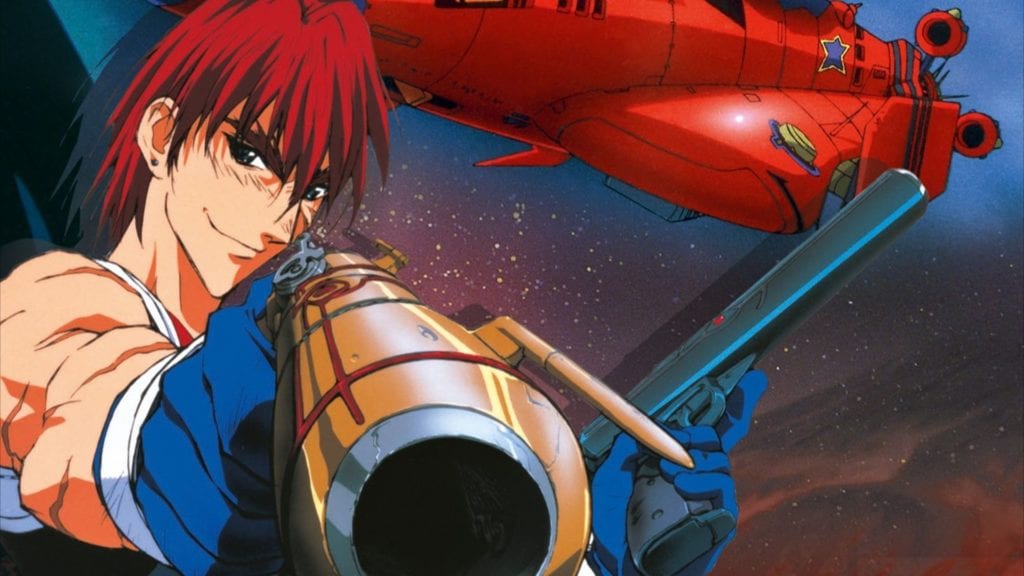
Cowboy Bebop is one of the most innovative, polished, and beautiful shows ever to grace television. It’s also a total bummer. Almost every character is broken, nursing wounds from their own respective tragic backstories. Spike, Faye, and Jett are all cynical and emotionally distant, trading witty barbs to hide their need for community. They are lost souls, desperate for comfort, but too afraid to ask for it. Cowboy Bebop is a masterclass in character realism. We love the show because it doesn’t have any easy answers. We love the characters because they feel like real people.
Outlaw Star is not a downer. The characters are rambunctious and larger than life. They are constantly telling each other what they want and how they feel. This makes the show much easier to binge. It also makes it a lot more shallow. The characters always seem to be most interested in getting to a place or finding a thing, always focused on external goals, which makes major milestones feel more like plot development than character development. For all of the shouting and gesturing they do, we never get a sense of the intrinsic driving force for any of them. The characters in Outlaw Star are fun to watch, but they don’t feel real.
Conclusion
Outlaw Star is a great, if uneven, show. Its greatest asset is its ability to nimbly jump from sinister themes to goofy antics and back again. In a way, this is also its greatest downfall. Outlaw Star doesn’t seem to know what it wants to be, so it tries to be a little bit of everything. Unfortunately, a jack of all trades is a master of none.
Audiences are likely to see bits and pieces of their favorite shows sprinkled into the art style, plot, and characterization. However, these similarities might leave the viewer cold, wondering why they’re not watching those other shows instead. In the end, Outlaw Star feels like a fantastic but failed experiment. It’s got style and sass, but if you’re looking for substance, you’re not likely to find it here.



Recent Comments